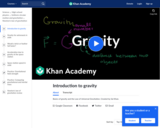
Basics of gravity and the Law of Universal Gravitation
- Subject:
- Physical Science
- Physics
- Material Type:
- Lesson
- Provider:
- Khan Academy
- Author:
- Khan Academy
- Date Added:
- 09/22/2013

Basics of gravity and the Law of Universal Gravitation
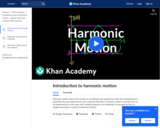
Intuition behind the motion of a mass on a spring (some calculus near the end).
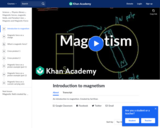
An introduction to magnetism
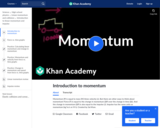
What momentum is. A simple problem involving momentum.
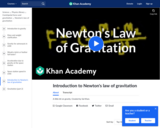
A little bit on gravity
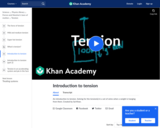
An introduction to tension. Solving for the tension(s) in a set of wires when a weight is hanging from them.
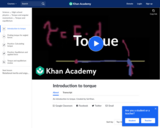
An introduction to torque
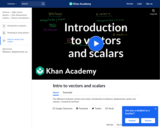
Distance, displacement, speed and velocity. Difference between vectors and scalars
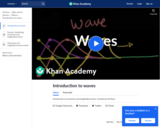
Introduction to transverse and longitudinal waves
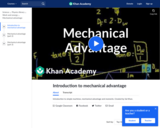
Introduction to simple machines, mechanical advantage and moments.

Introduction to the Doppler Effect
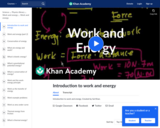
Introduction to work and energy

Students learn about video motion capture technology, becoming familiar with concepts such as vector components, magnitudes and directions, position, velocity, and acceleration. They use a (free) classroom data collection and processing tool—the ARK Mirror—to visualize and record 3-D motion. The Augmented Reality Kinematics (ARK) Mirror software collects data via a motion detector. Using an Orbbec Astra Pro 3D camera or Microsoft Kinect (see note below), students can visualize and record a robust set of data and interpret them using statistical and graphical methods. This lesson introduces students to just one possible application of the ARK Mirror software—in the context of a high school physics class. Note: The ARK Mirror is ported to operate on an Orbbec platform. It may also be used with a Microsoft Kinect, although that Microsoft hardware has been discontinued. Refer to the Using ARK Mirror and Microsoft Kinect attachment for how to use the ARK MIrror software with Microsoft Kinect.
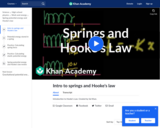
Introduction to Hooke's Law
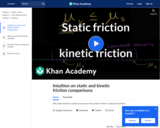
Why static friction is harder to overcome than kinetic friction

The invention of the battery with Alessandro Volta and Luigi Galvani
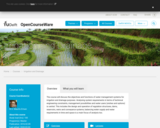
The course will discuss the objectives and functions of water management systems for irrigation and drainage purposes. Analysing system requirements in terms of technical engineering constraints, management possibilities and water users (wishes and options) is central. This includes the design and operation of regulation structures, dams, reservoirs, weirs and conveyance systems; balancing water supply and water requirements in time and space is a main focus of analysis too.

The video "Is Reality Real? The Simulation Argument" is a resource included in the Physics topic made available from the Kurzgesagt open educational resource series.

Students investigate potential energy held within springs (elastic potential energy) as part of the Research and Revise step. Class begins with a video of spring shoes or bungee jumping. Then students move on into notes and problems as a group. A few questions are given as homework. The Test Your Mettle section concludes. The lesson includes a dry lab that involves pogo sticks to solidify the concepts of spring potential energy, kinetic energy and gravitational energy, as well as conservation of energy.

This lesson introduces students to three of the six simple machines used by many engineers. These machines include the inclined plane, the wedge and the screw. In general, engineers use the inclined plane to lift heavy loads, the wedge to cut materials apart, and the screw to convert rotational motion into linear movement. Furthermore, the mechanical advantage describes how easily each machine can do work and is determined by its physical dimensions.